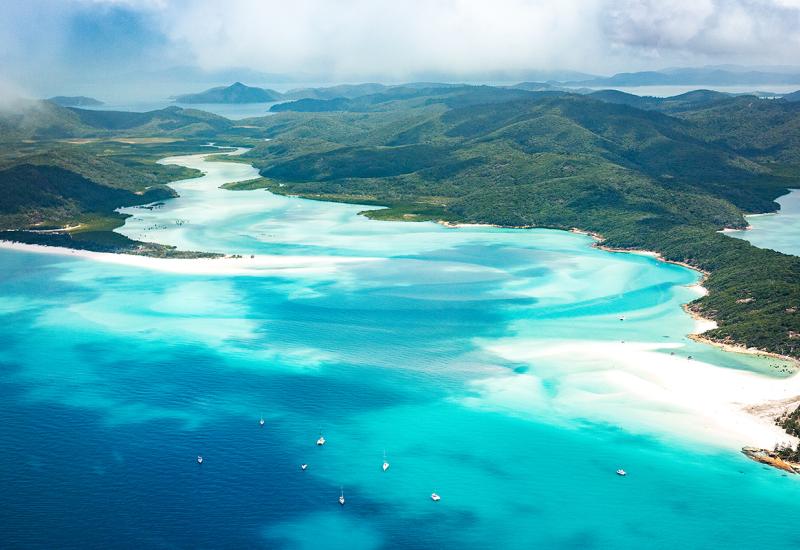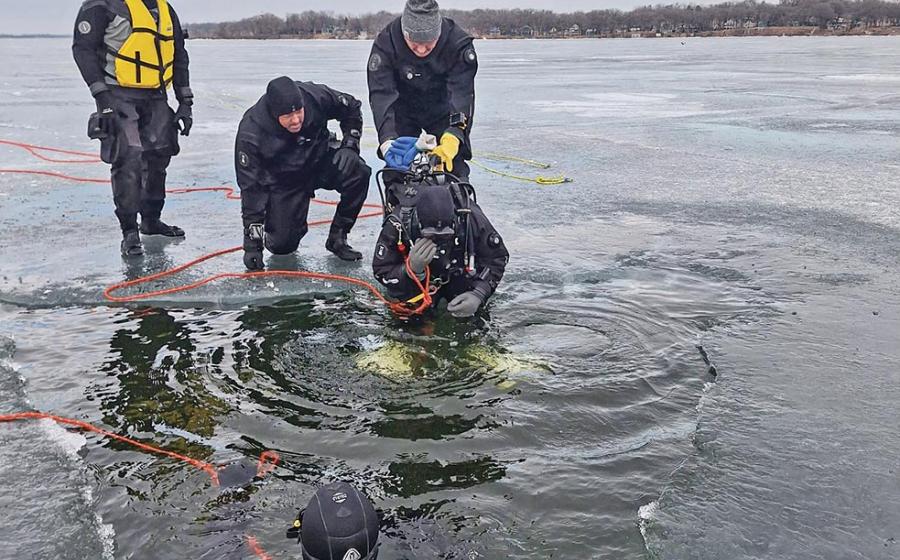Explore The World’s Reefs Virtually Through Google Street View

Courtesy The Ocean AgencyRichard Vevers diving with the Seaview SVII camera.
Just because you’re stuck at home—or at least not able to go diving—doesn’t mean you can’t get your fill of underwater exploration.
Ocean conservation nonprofit The Ocean Agency and offshoot organization Underwater Earth have created a thorough collection of virtual dives through Google Earth: The World's Ocean. Simply pick a reef and dive in, clicking the left and right arrows to see some of the healthiest reefs in the sea, Street-View style.
The majority of images in the collection were taken between 2012 and 2014 as part of the XL Catlin Seaview Survey, which was the first visual baseline record of the world’s coral reefs. All data collected has been made freely available to scientists through the XL Catlin Global Reef Record, and after the survey’s completion, The Ocean Agency partnered with Google to bring reefs into the homes of people worldwide.
The majority of images in the collection were taken between 2012 and 2014 as part of the XL Catlin Seaview Survey, which was the first visual baseline record of the world’s coral reefs. All data collected has been made freely available to scientists through the XL Catlin Global Reef Record, and after the survey’s completion, The Ocean Agency partnered with Google to bring reefs into the homes of people worldwide.
“Virtual reality was tailor made for ocean education,” says Richard Vevers, CEO and founder of The Ocean Agency. “It allows the 99.9% of people who have never had the opportunity to dive to explore beneath the waves. If you can get people to virtually experience what is happening to the ocean, you can inspire them to act.”
The survey team was able to capture such stunning 360-degree images using a custom-designed camera, the Seaview SVII, which is basically three wide-angle DSLR cameras attached to a DPV.
Using the scooter’s propulsion, surveyors were able to whiz around a reef at about 2-2.5 miles per hour while the camera took a photo every three seconds. On a single dive, the team was able to record over a mile of reef — much more than divers would get to see on a typical dive.
“The SVII is so much fun to use,” Vevers says. “It's very popular with sharks and rays, which often come in to check it out. You never know what's around the next corner.”
Below are just some places you can dive into with Google Earth: The World's Ocean.
Indonesia
The country of Indonesia, which straddles the Pacific and Indian Oceans, is made up of more than 17,000 islands, each with its own unique reef life. Divers are often attracted to this far-flung archipelago for its unmatched biodiversity — everything from the tiniest macro critters to the most massive megafauna can be seen in Indonesia’s waters.
Encounter manta rays off Komodo, explore coral-encrusted rock pinnacles off Batu Bolong, look around the USAT Liberty wreck off Bali, and more. Or dive deeper into the island of Raja Ampat through The Ocean Agency’s “Revealing the Center of Life” Google Voyager story.
Australia
When considering Australian diving, people often think of the Great Barrier Reef — and rightly so, as the 1,400-mile chain of coral reefs is arguably the most impressive structure in the big blue. Going on a virtual dive “down under,” you can visit 30 different spots along the Great Barrier reef, including famous sites such as Lizard Island, Opal Reef, and the Yongala Shipwreck.
The Pacific
Island hop through the world’s largest ocean as you virtually visit 22 destinations that should be on every diver’s bucket list, including Palau, Palmyra Atoll and American Samoa.
The Pacific is home to about 25,000 islands, most of which are uninhabited and virtually untouched. But some islands, like Hawaii, Saipan and Vanuatu, have experienced the extent of humanity, having seen some of the most significant battles of World War II. Divers can virtually visit the remnants of war as they stand today through The Ocean Agency’s “War in the Pacific” Google Voyager story.
More Scuba Diving News:










